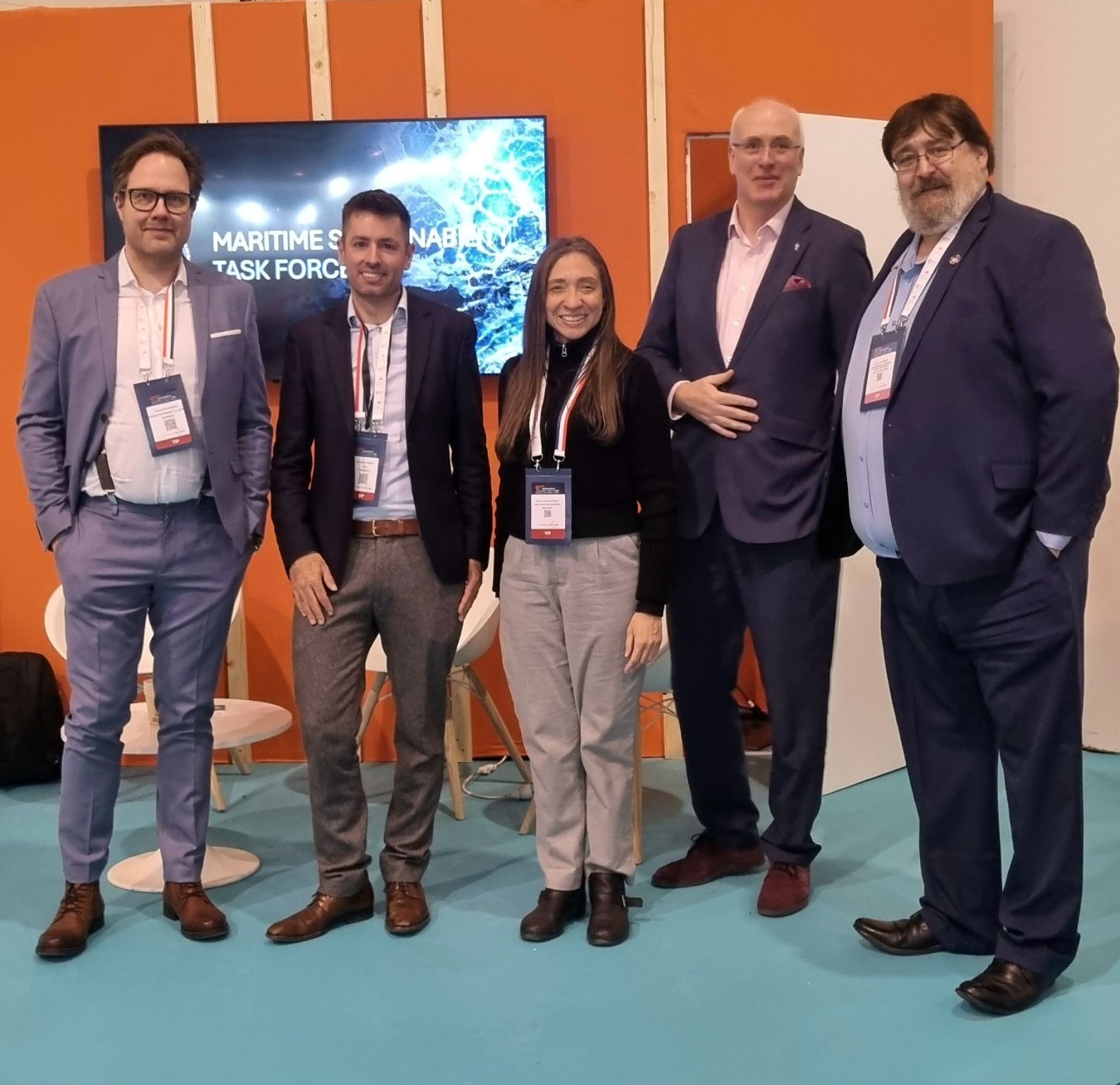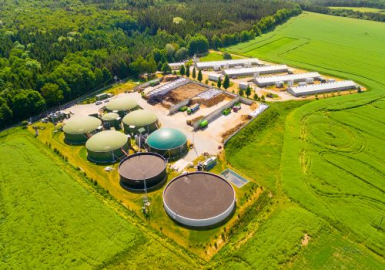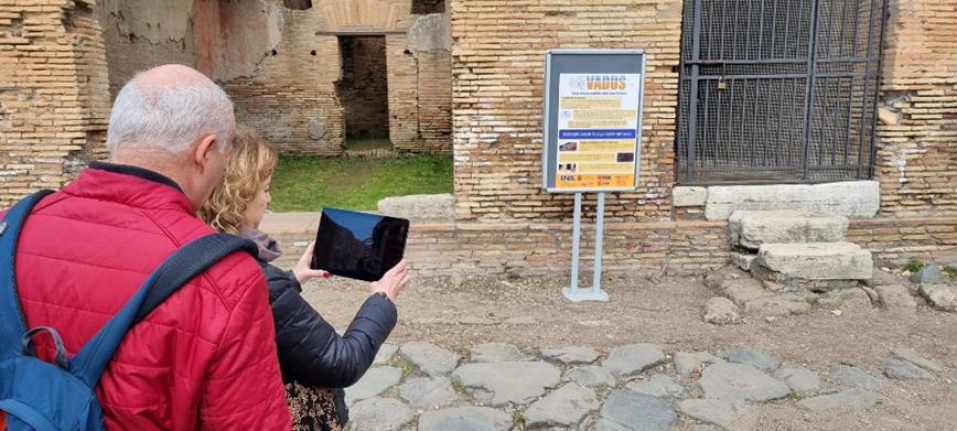Italian consortium uses AR/VR and satellite technologies to expand access to fragile historical sites
Italy boasts some of the most beautiful ancient artefacts in the world but managing open access to these unique heritage sites while preserving their integrity is an ongoing challenge. The VADUS (Virtual Access and Digitisation for Unreachable Sites) project, led by Italian strategic technology company NEXT Ingegneria dei Sistemi and supported by ESA’s Business Applications and Space Solutions (BASS) programme within the 5G/6G Strategic Programme Line, combines new 5G technologies, Galileo High Accuracy Service (HAS) and Augmented and Virtual Reality (AR/VR) technologies to address these challenges.
VADUS uses 3D colour scanning and laser-induced fluorescence (LIF) which allows them to capture high-resolution 3D models. These models are used to create virtual environments which can then be explored via mobile apps or wearable VR devices. However, seamless AV/VR experiences are only possible thanks to 5G technologies and HAS satellite services.
At a time when local economies can subsist on tourism for income but must balance the impact from tourists, AR/VR technologies offer a solution. There may also be historical locations or information not open to the public due to their fragility or lack of accessibility. In these cases, AR/VR can enrich the cultural experience at museums, archaeologic sites, and other heritage monuments by providing access to these sites.
Despite the potential for these media technologies to make sites accessible and provide tourists with new experiences, certain technical requirements such as bandwidth or connection limitations limit the scope of these applications. Previously, AR/VR experiences were limited to a static position due to the technological restraints of mobile devices or VR headsets. In many cases, this led to an underwhelming or poor experience for the user. However, the VADUS application allows users a tailored AR/VR experience where the can move freely around the virtual world.
“VADUS will act as a technological enabler, to overcome the difficulties related to access for environmental reasons, like the preservation of the asset, due to architectural barriers or related to the 'fruition' of a cultural asset” says Valeria Spizzichino, an ENEA researcher at the Diagnostics and Metrology Laboratory.
The VADUS team demonstrated the app’s potential at four historical sites in Italy: Casa di Diana (House of Diana), Fortezza del Pastiss (Pastiss Fortress), Aula Isiaca (Isiac Hall) and Casa dei Grifi (House of Griffins). Not only were users able to traverse the virtual world freely via 5G tablets at many of the demonstration sites, additional media and insights were provided thanks to LIF, which allowed artefacts which have been damaged or destroyed to be reconstructed virtually.
“I am extremely pleased with the final results of the VADUS project” says Davide Coppola, Head of ESA’s Space Applications Initiatives Section. “ESA’s support in this endeavour will not only allow the public virtual access to previously unseen sites but bring awareness and preserve important cultural heritage sites in Italy and beyond.“
VADUS is looking to build on the successful trials in Italy and provide tailored apps, tours, and experiences to museums, cultural institutions, local communities, and archaeological parks in the future.
AirPlate ApS
Hovedkvarter Grønlandsgade
5000 Odense, South Denmark
Denmark
ESA launches Maritime Sustainability Task Force in Marseille

The European Space Agency (ESA) officially launched its Maritime Sustainability Task Force at EUROMARITIME in Marseille last week, where several members of the new collaboration joined ESA representatives at the event. Initiated by ESA’s Business Applications and Space Solutions (BASS) programme, the new Task Force will see ESA working together with a number of major players in the sector, including shipping companies, maritime authorities, classification societies, and industry associations. Together they will work to leverage on space solutions to reduce the environmental impact of the maritime sector.
The global maritime industry is responsible for 95% of global trade by volume and is undergoing a paradigm shift as it seeks to mitigate its impact on the environment. The transformation, driven by economic, social, and regulatory pressures, will be a decades-long effort but has the potential to revolutionise the impact that the maritime industry has on the environment.
Space is poised to play a vital role in this transformation, having the global coverage to connect the oceans, and the capability to generate actionable information which will underpin the green transition of the maritime sector. Supported by its Member States and partners across Europe, ESA has initiated the Maritime Sustainability Task Force as a means of identifying and agreeing on short- and long-term priority areas and fostering the adoption of space-based solutions on a wide scale, thus maximising their impact. This will include initiatives that will alleviate the impact of greenhouse gas emissions, air pollution, water pollution, noise pollution, and the spread of non-indigenous species.
Speaking at the launch in Marseille, Nick Appleyard, Head of Applications and Solutions at ESA, said “We are delighted to launch the Maritime Sustainability Task Force today, marking the culmination of many months of work and the start of an important move forward in reducing the environmental impact of the maritime sector.”
The Task Force comprises representatives from across the maritime sector and continues to expand. The founding members comprise maritime authorities, including the European Maritime Safety Agency (EMSA), classification societies, such as Norwegian-based DNV who are independent experts in assurance and risk management, major container shipping lines, represented by the Mediterranean Shipping Company (MSC) and leading Ro-Ro ship owners and operators such as Wallenius Wilhelmsen and Grimaldi Euromed SpA. The Task Force also includes shipyards, represented by Damen Shipyards Group, foundations including the Mærsk Mc-Kinney Møller Centre for Zero Carbon Shipping, industry associations, such as the International Windship Association and the One Sea Association and maritime clusters, including TMA BlueTech and the Ocean Autonomy Cluster.
The Maritime Sustainability Task Force is the third such initiative to be launched by ESA in the past twelve months, joining the Task Force for Innovation in Energy through Space and the Smart Cities Task Force which were launched in 2023 and form part of the ESA BASS strategy to generate significant green, social and economic impacts on Earth.
Task Force Members:
DITECFER s.c.ar.l.
UNISER Polo Universitario, Via Sandro Pertini, 358
51100 Pistoia PT
Italy
Intecs Solutions S.p.A.
Polo di attività, Via Egidio Giannessi, 5
56121 Montacchiello PI
Italy
HMC Peas
Fleet Estate Office, Holbeach Hurn
Spalding
PE12 8LR
United Kingdom
ADAS
Spring Lodge 172 Chester Road
Helsby
WA6 0AR
United Kingdom




